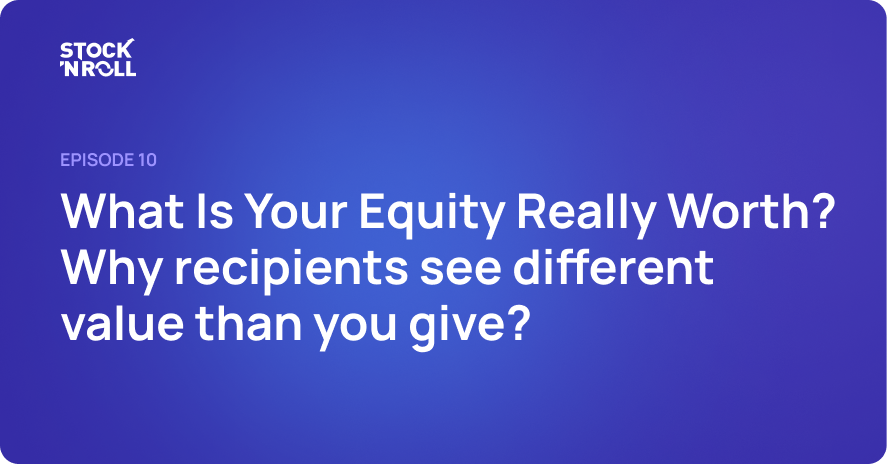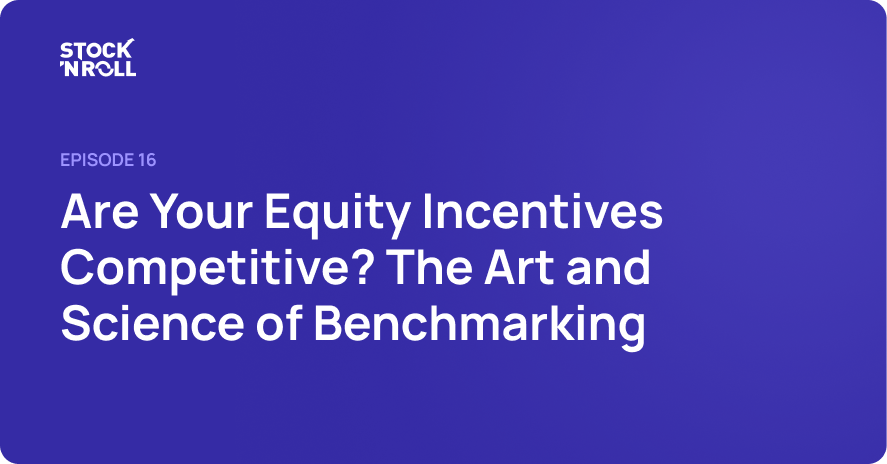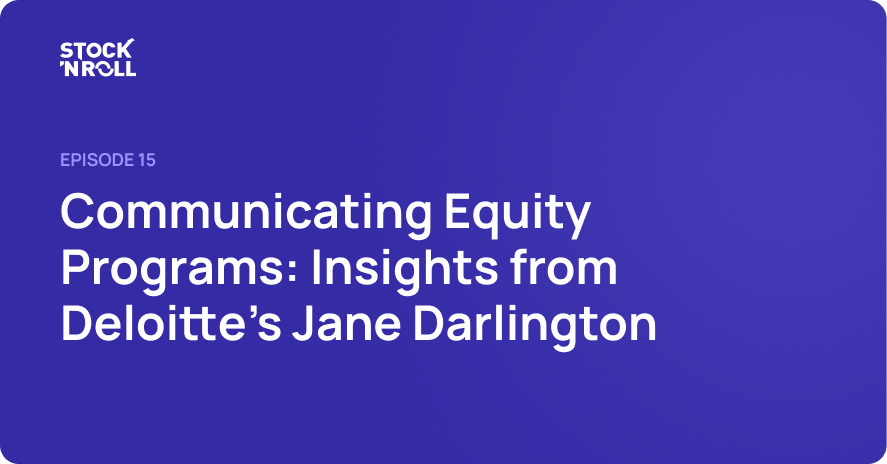In the latest episode of our podcast series Stock 'N Roll, we had the pleasure of hosting Dr. Stephan Hostettler, the founder and managing partner of HCM International, an independent advisory firm he established in 2002.
In the world of executive and employee compensation, there's a fundamental disconnect that many companies struggle with: the gap between what equity compensation is actually worth and what recipients perceive it to be worth. This challenge has become increasingly critical as companies rely more heavily on stock options, performance shares, and other equity-based incentives to attract, retain, and motivate talent.
The Tale of Two Values
When designing equity compensation programs, companies typically focus on what's called the "fair value" – a risk-adjusted, objectively measured value that considers factors like time risk, operational risk, and market volatility. This is the number that appears on financial statements and drives expense recognition in P&L calculations.
But there's another value at play: the "perceived value" – what employees actually believe their equity compensation is worth based on their personal circumstances, risk tolerance, and understanding of the program.
Consider a typical example: A stock option with a current share price of €90 might have a fair value of approximately €30 when you factor in the 10-year time horizon and associated risks. However, if the strike price is set too aggressively or the performance targets are unrealistic, the employee receiving this option might perceive its value as close to zero.
This creates a lose-lose situation: the company expenses €30 in their P&L while the employee feels they've received nothing of value.
The Startup Dilemma
This perceived value gap is particularly pronounced in startup environments. Founders, driven by ambitious visions and typically having other sources of wealth or funding connections, might value potential equity at sky-high levels. They see a €10 strike price against their billion-dollar dreams as practically guaranteed wealth.
However, employees – especially those in different life stages with families, mortgages, and immediate financial needs – view the same equity through a much more conservative lens. They've seen market ups and downs and understand that startup dreams don't always materialize.
The result? Talented developers and key employees in Eastern Europe and other regions are becoming increasingly reluctant to accept options-heavy compensation packages, preferring the certainty of cash over the promise of future wealth.
Four Conflicting Goals
Effective equity compensation must balance four often-conflicting objectives:
- Motivation – Creating meaningful incentives for performance
- Retention – Keeping key talent from leaving
- Alignment – Ensuring management acts in shareholders' best interests
- Cost Control – Managing the financial impact on the company
The challenge is that optimizing for one goal often undermines the others. Highly motivating out-of-the-money options provide tremendous upside leverage but offer zero retention value if business execution falters. Conservative, easily achievable targets provide retention security but may not drive exceptional performance.
Bridging the Gap: Practical Solutions
- Understand Your Audience
The first step in bridging the perceived value gap is accepting that equity incentives work best for a limited portion of your workforce – typically 2-3% of employees who are higher earners with more financial flexibility. For a 1,000-person company, this translates to 20-30 people in performance-based equity programs.
- Set Realistic Targets
One of the most effective ways to improve perceived value is setting achievable performance targets. This might mean establishing equity plan targets that are 20-30% below strategic plan goals. While this sounds counterintuitive, it ensures the long-term incentive plan actually functions as intended rather than becoming worthless paper.
- Design for Bad Times
The true test of an equity compensation program isn't how it performs during market booms – it's how it maintains motivation and retention during downturns. Consider vesting schedules that provide some value even during periods of underperformance, perhaps down to -20% or -25% relative performance versus peers.
- Maintain Transparency
Regular communication about program performance and company progress is crucial. Executives track their equity values closely, even if they don't openly discuss it. Providing clear, regular updates helps maintain engagement and understanding.
Cultural Considerations
The acceptance and effectiveness of equity compensation varies significantly across cultures. In the US, executives openly discuss variable compensation as a key motivator. In Switzerland and much of Europe, the same conversations happen more implicitly, with participants claiming money "doesn't really matter" while clearly tracking every detail of their equity performance.
These cultural differences must inform both program design and communication strategies.
Market Timing Matters
Market conditions significantly impact perceived value. During prolonged bull markets, employees become accustomed to steady equity growth. When markets turn volatile or decline, the same programs that once seemed generous can quickly lose their motivational power.
Smart companies adjust their approach during different market cycles, sometimes shifting from relative performance metrics (comparing against peer companies) to absolute targets, or providing additional grants to maintain competitive positioning.
The Investment Mindset
Perhaps the most important perspective shift for leadership is viewing equity compensation not just as an expense, but as an investment in organizational survival and growth. During crisis periods or major transitions, maintaining key talent through thoughtful equity programs can be the difference between company success and failure.
This is particularly relevant for private companies dealing with down rounds or challenging fundraising environments. While investors naturally want to preserve their returns, completely eliminating equity incentives during tough times risks losing the very people needed to turn the situation around.
Conclusion
The perceived value gap in equity compensation is a complex challenge that requires thoughtful design, realistic goal-setting, and ongoing communication. Success comes from understanding that what you give isn't always what employees receive, and designing programs that bridge this gap through empathy, transparency, and smart structural choices.
Subscribe below and follow us on social media to stay updated with our insightful blog posts. We're here to help you navigate the world of equity incentives and drive your company's success!




